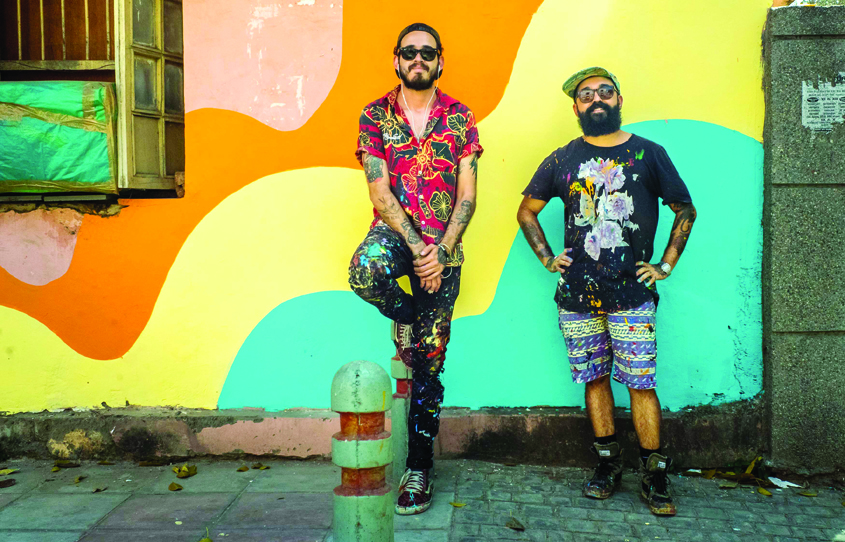Q. How did you manage to get this project?
Douglas: The Brazilian Embassy in India & the St+Art India, along with Asian Paints, partnered to promote Brazilian art in India. So they contacted our producer at Justkids, who organised our participation on this project. Since December 2015, the St+Art India foundation has been working with Asian Paints on art projects in public spaces to make art accessible to a wider audience in cities across India.
Q. Could you please share your thoughts on the murals you did in Lodhi Colony?
Douglas: St+Art India foundation has been working in close collaboration with Asian Paints to restore and recreate the Lodhi Colony area of New Delhi. This sort of initiative aims at creating a more positive living by beautifying public spaces through art and colour, and making it more appealing to the eyes. Working in Lodhi Colony was great. Quite easy, people were very friendly. We interacted a lot with the kids who were around us every day while painting. It was a really fascinating trip on many levels — the culture, the food, the people and the dynamics of the city. I and Douglas each did one mural, which is pretty rare as we usually collaborate on the same one. So this was an interesting experience artistically as well. We are very thankful for the invitation and happy to have let our Brazilians flavours in Lodhi Colony.

Q. The artwork is very colourful and organic, focusing on local Indian flora and fauna. What type of research did you do for this project?
Renato: Before travelling to India, we made a quick investigation about the fauna and flora of the country as these are some of the signature elements in our designs, and we realised how vast and rich it was, so it was a very good start for our inspiration. Then, once on site, and before starting to paint the murals, we were lucky enough to visit a bit, walk the streets of Delhi and immerse ourselves in its brilliant and effervescent culture. And of course one thing that caught our eye was the fantastic color palette of India.
Before travelling to India, we made a quick investigation about the fauna and flora of the country as these are some of the signature elements in our designs, and we realised how vast and rich it was, so it was a very good start for our inspiration.
Q. Have you also incorporated certain Brazilian designs and forms into this?
Renato: Yes, some of them. In a way it’s always with us, intentionally or not, we cannot escape our native influence. And this is probably the most interesting part. How our creations will blend with the new environment, it’s like a magic cocktail. Also when we paint in the streets, especially in such an exotic country (for us) as India, we try to exchange with the people, the surroundings and the community. And naturally we adapt our aesthetic to this new context.
Q. What are your views on public art?
Douglas: At the beginning, we were working as illustrators exclusively in Brazil. We are from a small town, located in a state that does not have a very large tradition with regards to art.
Luckily, we were discovered by a curator who worked internationally, named Charlotte Dutoit, five years ago. She guided us about public art among other things and since then our life has been a great adventure! So we are not sure how to describe the importance of public art and how it’s received by others, but as far as we are concerned, this art form has transformed our lives and brought us to know so many people, artists, countries and cultures. I hope in a way that public art brings the same to the city. I know for a fact that some people would never have had the opportunity to see art or discover artists without such public art initiatives. The revitalisation of public spaces makes cities more welcoming and walkable. Having a district with art, murals etc. can create a place for people to exchange and share with each other and co-exist. On the other hand, we cannot deny that in some cases renovation and gentrification have some negative aspects, but there are plenty of positives too.

